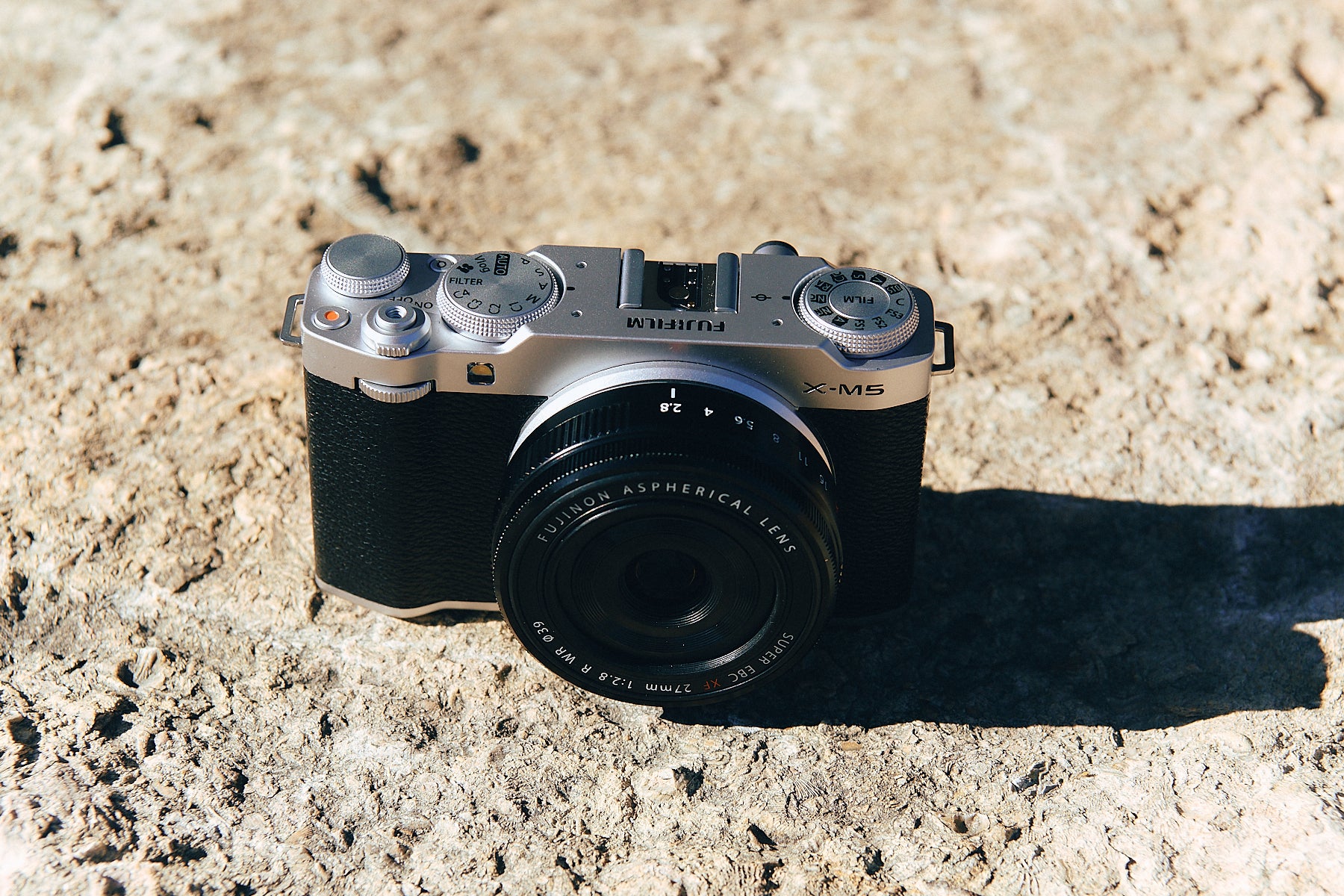TECH FREAK - A geeky department store of the future.
Vol.4 FUJIFILM X-M5




2024 is almost over. This year's buzzwords have been announced, but I was surprised that "the 2024 problem" was not selected for some reason. This word refers to the fact that the Work Style Reform Bill has limited drivers' overtime work hours to 960 hours per year. This means that the driving distance per person will be reduced, and more manpower will be required.
There is a limit to what one person can do alone. I felt like I had been told that, so I decided to take a chance and try out the method. The person I chose to talk to was Mr. Naito, the photographer in charge of the photography for this series. As we were talking, he told me that there was a new camera from Fujifilm that looked like a good choice. That was the entry-level mirrorless digital camera called the X-M5.

When I took the camera out of the box and held it in my hand, I was surprised at how small and light it was. Without a lens, it weighed about 355g with the battery and memory card inserted. This is apparently the lightest of the X series. It is small, measuring 111.9 (width) x 66.6 (height) x 38 (depth) mm, and can easily fit in an outerwear pocket.
This is because this camera is the successor to the "X-M1" released in 2013. It inherits the small and lightweight concept of the "XM" series, which is making a comeback after 11 years, and is designed to omit an electronic viewfinder (EVF), in-body image stabilization, and built-in flash. In pursuit of good images without interfering with the basic posture, the image sensor is the APS-C size "X-Tans CMOS 4" with approximately 26.1 million effective pixels, and the image processing engine is the latest "X-Processor 5". The design is brisk and mobile, and in a good way, it is somewhat reminiscent of a light car.
This article is exclusive to monthly members
To read more
All articles are free to read. All content is free during the trial period.
Buy a Monthly Membership Log in